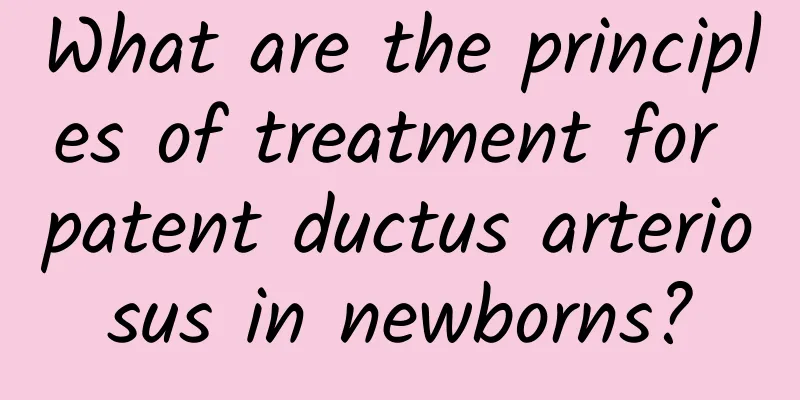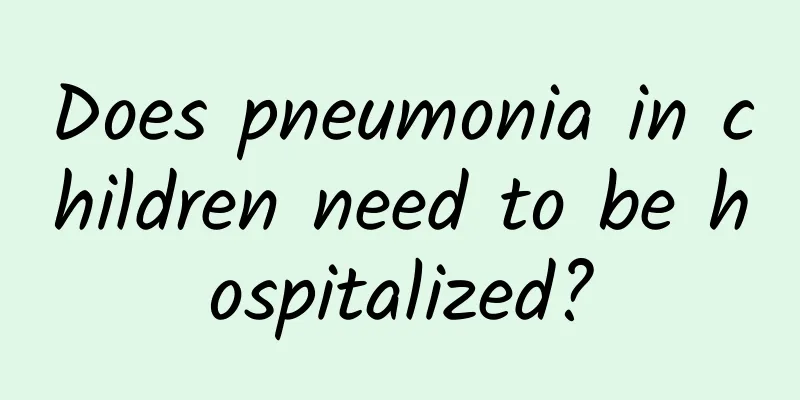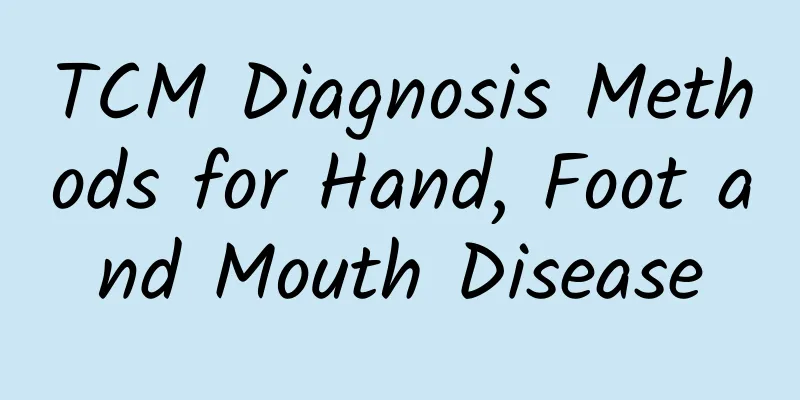What are the principles of treatment for patent ductus arteriosus in newborns?

|
The treatment principles for patent ductus arteriosus in newborns include observation, drug therapy, and surgical treatment. The specific choice depends on the severity of the disease and the health of the child. Mild cases may not require immediate intervention, while moderate to severe cases require drug or surgical treatment. 1. Observation and monitoring For newborns with mild PDA, doctors may recommend regular observation and monitoring. The ductus arteriosus usually closes naturally within a few days to a few weeks after birth. During this time, doctors will evaluate the closure of the ductus with tests such as echocardiography and monitor the child's heart and lung function. If the PDA does not cause obvious problems for the child, no special treatment may be needed. 2. Drug treatment For children with moderate patent ductus arteriosus or symptoms, drug treatment is the first choice. Commonly used drugs include: Indomethacin: Promotes ductal contraction and closure by inhibiting prostaglandin synthesis. Ibuprofen: Its mechanism of action is similar to that of indomethacin and it is often used in premature infants. Acetaminophen: Can be used as an alternative medication in some cases. Drug treatment is usually carried out in the neonatal intensive care unit (NICU), and the drug effects and side effects need to be closely monitored. 3. Surgical treatment For children who are not responding to drug treatment or whose condition is severe, surgical intervention is necessary. Common surgical procedures include: Duct ligation: Direct ligation of a patent ductus arteriosus during thoracotomy. Minimally invasive occlusion: Through catheter intervention technology, an occluder is implanted in the patent ductus arteriosus. Thoracoscopic surgery: less trauma, suitable for some children. The choice of surgery should be based on the child's specific situation and medical condition, and recovery should be closely monitored after surgery. The treatment of patent ductus arteriosus in newborns requires a personalized plan based on the severity of the disease and the health status of the child. Mild cases can be solved through observation and monitoring, moderate cases can be treated with medication, and severe cases require surgical intervention. Regardless of the treatment method, it must be carried out under the guidance of a professional doctor, and regular follow-up must be performed to ensure the healthy growth of the child. |
<<: What anti-inflammatory medicine is effective for children with mumps
>>: What is Kawasaki disease in children?
Recommend
What kind of porridge is good for children with cough
When children have a cough, they can choose porri...
What is the standard for curing congenital heart disease in children?
When it comes to congenital heart disease in chil...
What are the side effects of taking Yinzhihuang oral liquid for newborn babies with high jaundice?
When newborn babies have high jaundice, Yinzhihua...
Which hospital is the best for jaundice treatment?
Neonatal jaundice refers to a disease characteriz...
Symptoms of hand, foot and mouth disease in children
Symptoms of hand, foot and mouth disease in child...
How to prevent children from catching colds in autumn? 4 tips to effectively prevent children from catching colds in autumn
Children have relatively poor disease resistance,...
What causes pneumonia in children? Can pneumonia in children be transmitted from mother to child?
Neonatal pneumonia is a common pediatric disease....
Baby cough diagnosed with allergic rhinitis
If your baby is coughing and is diagnosed with al...
What foods should children with pneumonia avoid eating? What tests should be done for children with pneumonia?
Pneumonia is a common disease, and children are t...
What is the ointment for mumps called?
What is the ointment for mumps called? The ointme...
How to tell if it's hand, foot and mouth disease
Whether it is hand, foot and mouth disease can us...
Can hand, foot and mouth disease be transmitted to adults? You must know these preventive measures!
Xiao Li is a young mother. Recently, her child Xi...
Can children take ribavirin granules when they have a cough? How to treat a child with a severe cough?
Children can take ribavirin granules when they ha...
Can coughing in children lead to anemia?
Can coughing in children lead to anemia? Coughing...
Will kidney disease recur in children?
Why do children have recurrent kidney disease? Do...









